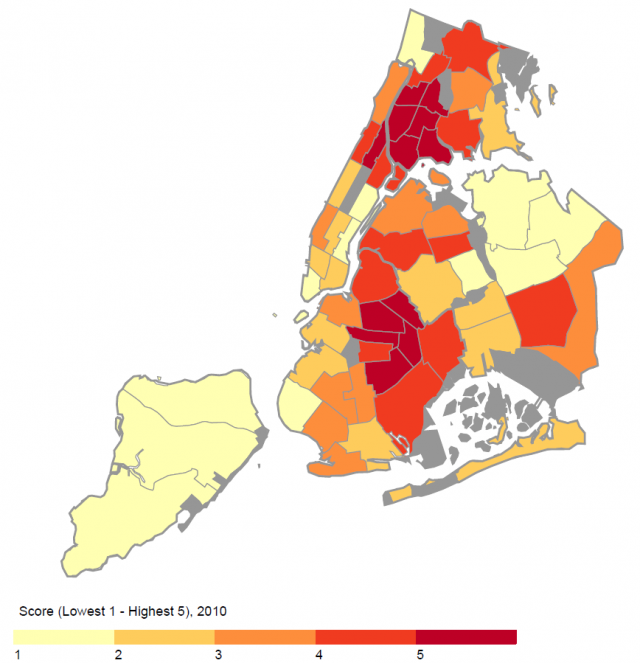New York City Adapts To Deal with Projected Increase of Heat Waves

Heat waves are one of the leading weather-related causes of death in the United States. According to New York City’s vulnerability assessment, this vulnerability is expected to worsen with changing environmental conditions.
New York City has taken substantive actions to reduce its current vulnerability (i.e., increasing its resiliency to current conditions) as well as its future vulnerability (i.e., preparing to the projected future environmental conditions).
In order to promote resiliency, NYC is increasing use of cooling centers. Also, NYC supports outreach through the Be-a-Buddy Program to share life-saving information with particularly vulnerable populations.
To prepare for future increases in temperature, the city promotes several resiliency strategies. These strategies are designed to moderate the urban heat island effect and reduce the severity and frequency of future projected heat events. Strategies include:
- Green infrastructure.
- Reforestation.
- Reflective, or “cool” roofs.
New York City is continuing to evaluate their vulnerability and the effectiveness of its preparedness and resiliency actions using the most up-to-date information.
| How Did They Do It? | Applicable EPA Tools |
|---|---|
Assessed and analyzed vulnerabilities within the 2013 Climate Risk Information Report.
| The National Climate Assessment can provide a broad projection of average temperature changes and heat risk for your region based upon emissions scenarios. NOAA's Archival Repository: Fifth National Climate Assessment |
Promoted resiliency to current temperature conditions, particularly for vulnerable populations.
| CDC’s Heat & Health tracker helps identify the communities most at risk, including older adults and those experiencing mobility concerns. * (This is a non-EPA resource from the Centers for Disease Control and Prevention.) |
Implemented actions that provide co-benefits to air quality, water management and emergency preparedness.
| EPA’s Excessive Heat Events Guidebook helps identify heat preparedness and resilience strategies. For more on using green infrastructure to provide co-benefits, see the “Reduce the Urban Heat Island Page.” |
Evaluating performance and risk under the best-available science.
| The Green Infrastructure to Reduce Urban Heat Island Effect webpage provides resources to model and evaluate the performance of green infrastructure strategies that reduce the urban heat island effect. |
Similar Cases
To see how New York conducted a vulnerability assessment for changing environmental conditions, view the NYC Heat Plan case. Remember, heat events and other disaster events can disproportionately impact at-risk or vulnerable communities.
To view a case study that identifies and actively engaged vulnerable communities in adaptation planning for heat events, view Chicago Heat Emergency Response. To see how a community has used green infrastructure to both reduce the impact of future heat events and reduce stormwater runoff during extreme precipitation events, view Chicago, IL Uses Green Infrastructure to Reduce Heat Event Impacts.
- NYC Heat Plan case
- Chicago Heat Emergency Response
- Chicago, IL Uses Green Infrastructure to Reduce Heat Event Impacts
References
- NYC Cool Roofs: 2013 Annual Report (PDF)(13 pp, 12 MB, About PDF)
- Heat Related Brief (PDF)(3 pp, 257 K)
- NYC Panel on Climate Change: Climate Risk Information 2013, Observations, Climate Change Projections, and Maps (PDF)(38 pp, 1.2 MB)
- NYC Climate and Health Website
- US Climate Resilience Toolkit: Extreme Heat
- New York City Panel on Climate Change 2015 Report, Chapter 5: Public Health Impacts and Resiliency
